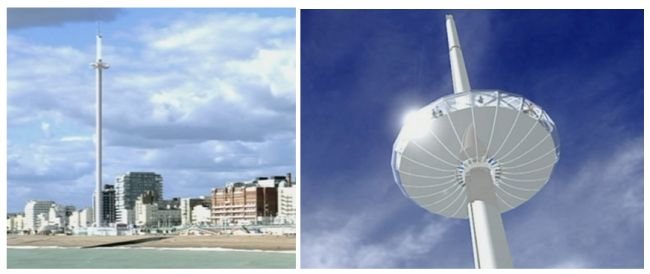The redevelopment of Brighton and Hove
30 years ago, sea side towns like Brighton were dead. The towns and cities around Brighton are being reborn. These are exhilarating times. New settlements are springing up. South and south east pressure is increasing because people are moving out of London.
Cities are densely populated and the density is on the rise. Controversy is raging. It is the crucial time for Brighton and Hove.
It is estimated that the population of Brighton will increase 22000 in the next ten years.
3 radical developments altering Brighton seafront
1) 176m high spike – designed by the people who designed London Eye

2) At the Marina, far east end of the city, huge 40 storey tower – centre of more than 850 new apartments with some restaurants and shops.
3) Far west of the front – most controversial project – a plan to rebuild King’s sports centre along with another 750 more flats.

Brighton has been built and developed by developers. Town planners were not the key players in the design of Brighton and Hove.
Thomas Kemp – Stunning piece of Regency Architecture.
He was a developer and built it to make money.
Sue Berry is an expert on how the city grew.
According to him, the development in Brighton was driven by developers trying to make money. Spread out happened towards sea front from 1930s, Brighton is thought as a regency town.
If we look at the seafront and analyse different buildings, we realize that it is not any one type of architectural style that has been used but every building represents a different architectural style.
- Regency
- Victorian
- Modernist
- Italianate

It is important to learn from our mistakes made in 60s and 70s.
How do people see Brighton?
People want in live in Brighton. That’s why to cater to the increasing needs of the people, we have to build new homes. We cannot stop people from migrating to Brighton. We can’t tell them that we haven’t gotten any room for you. We need new people because this boosts the local economy.
Pier Gough – Seaside Architecture
According to him, people live in Brighton for pleasure. It is well known as a pleasure town.
- Living extravagantly
- Residential pleasure principle
David Marks MBE built the London eye. He is designing the I360 tower at the seafront in Brighton.
Adam Marsahall
Centre for cities
He explains the complexity of developments by summarizing it under three categories:
1) Planning permission that could years to sort out
2) Funding – Developers have to struggle to get adequate funding
3) Land itself – The land might be contaminated and might need clean up which involves heavy expenditure.
And it is also about return on investment.
The government has decided not to build on green field sites at the edges of the town.
So the land in city centre has gone up in value.
For example: The land next to the Brighton Railway Station has become a massively important development site.
The reason for this is because the developer would be able to get huge returns on this land whereas you couldn’t before. Cities are the places where people are investing. These are the places where people work, sleep, live or play.
Property market has made it possible to regenerate the least favourite dumping ground.
It is not easy to find land to develop.
Brighton Marina
A 40 storey tower has been proposed. Its huge. The developer Andrew Goodall from Brunswick Developments has been asked to construct 40% affordable housing on the site.

That would mean rich and average people will be balanced. The development has been designed for high density and the permission for construction has been granted. The people from Sussex square are infuriated because of the tower since it will hide the view of the sea front.
Sites to be developed
There are two sites which are going to be developed for high density.
1) Marina
2) King Alfred
Hove is sedate. If the proposal at King Alfred is accepted, it will alter the skyline of Hove. The project has been designed by Frank O Gehry. The buildings look like Quarky buildings.
30% land – occupied by housing
70% land – sports centre and open space
Alan McCarthy
Brighton and Hove Council member
There was an important question that was asked to Alan McCarthy regarding the construction.
Why does the Council not just build and let the developers intervene?
He said, the council does not have the money to make new construction and hence have to involve developers in the construction sector.
Why Study Brighton?
It is important to study the history of development for reasons such as:
1) It is important to analyze the mindsets of the people
2) Getting to know what people are used to and appreciate
3) Understanding how development took place since the plan is to develop new towns around Brighton
